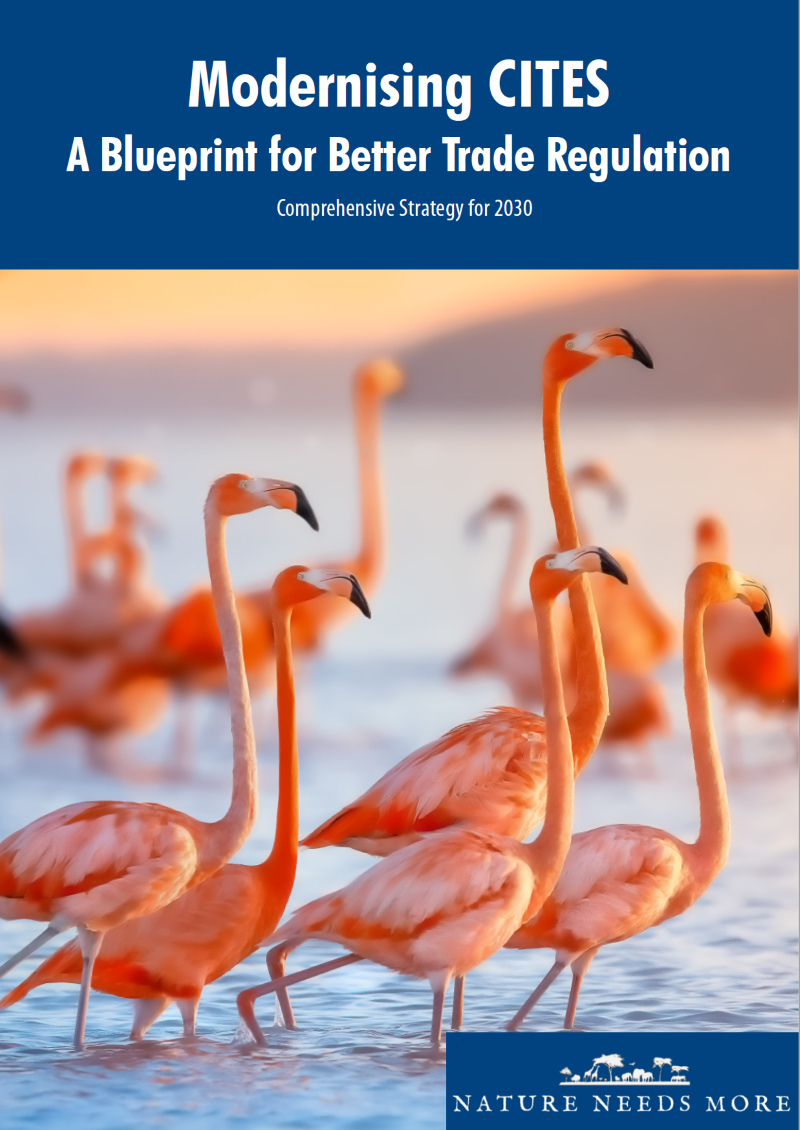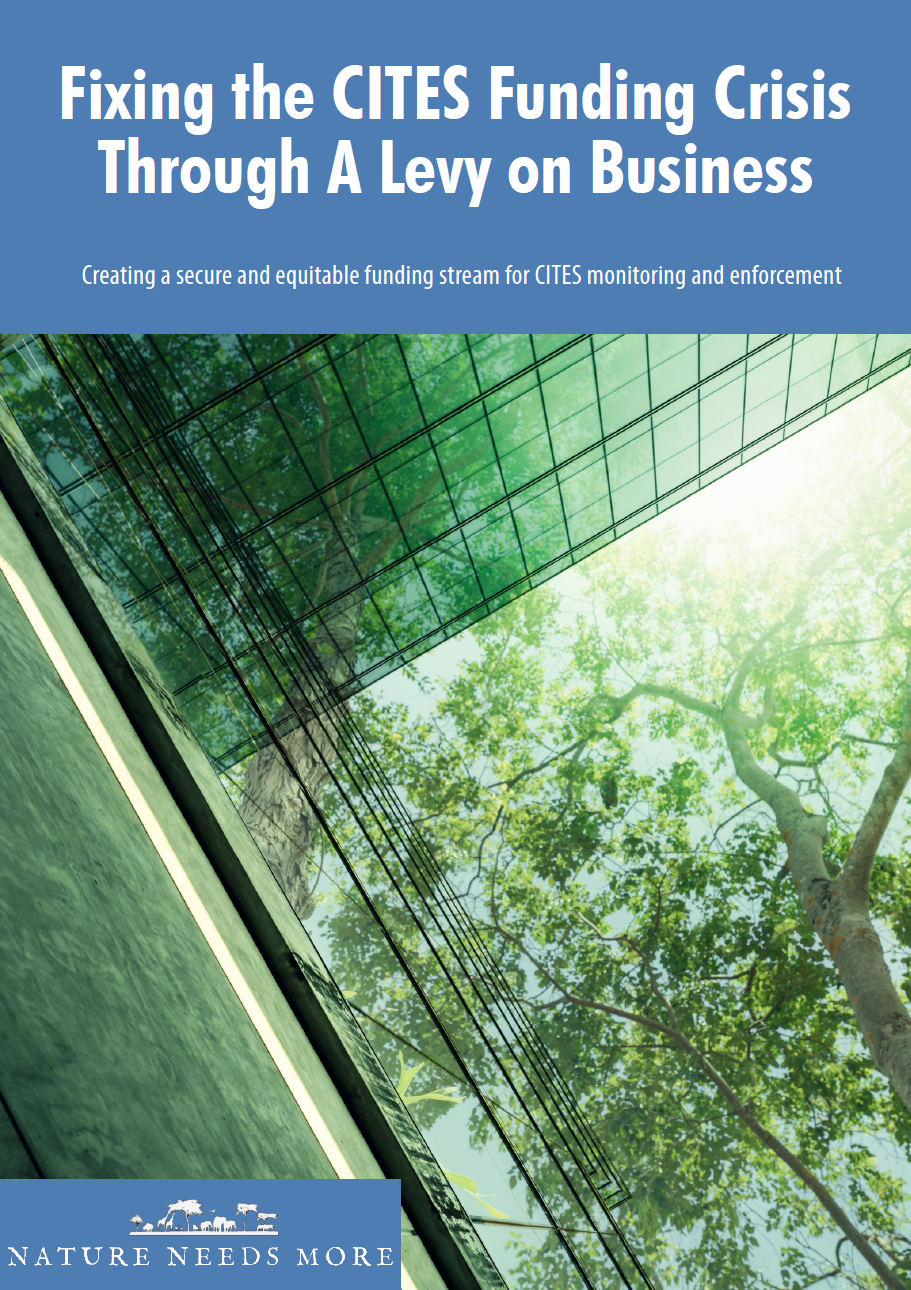Why Industry Needs To Contribute
Currently businesses benefiting from the huge profits made from the trade in endangered flora and fauna do not contribute to the cost of regulating and managing the trade. The only payments made by businesses trading legally under CITES are for obtaining export permits. Those making all the profits – importers in wealthy countries – pay nothing in almost all cases.
The CITES Secretariat receives annual core funding of just US$6.2 Million to regulate and monitor the trade in over 40,000 listed species. This mean the Secretariat has basically no ability to support signatory countries or to create, for example, binding standards for non-detriment findings, which could go a long way forwards creating a more effective regulatory system under CITES.
All monitoring and enforcement activities and the related costs fall on national governments, as CITES was set up as a non-self-executing treaty. This is clearly inequitable, as the costs fall disproportionally on (mainly developing) exporting countries. With the legal trade worth over US$320 Billion pa and the illegal trade estimated to be worth somewhere between US$91-258 Billion pa, the current model for regulation is clearly not working. The question is Why?

CITES is in effect the ‘industry regulator’ for the international trade in endangered flora and fauna, that has enabled businesses importing CITES listed endangered species to not engage – they are ‘free riding’ on the system – they get all the benefits (and profits) and cover none of the costs; and this has been allowed to go on for decades.
CITES is responsible for maintaining the integrity of the legal trade in endangered species and, as such, prevent the illegal trade. But in reality the illegal trade may be as large as 80% of the volume of legal trade, which means the illegal trade is out of control and regulation is not set up properly (In a well-regulated industry [such as aircraft components], the level of illegal parts is <10%). In addition, the current CITES system cannot provide trade analytics to prove that the sustainable use model is working.
Wildlife trafficking is not a priority for national governments or customs anywhere in the world, so resourcing even in wealthy countries is minimal. The GEF, US, EU, Germany and World Bank have provided funding to governments to address the illegal wildlife trade at about US$200 Million pa in recent years, but the illegal trade continues to grow faster than the world economy by factor of 2-3 (as reported by UNEP).
The disparity between funds available for regulation and monitoring compared to the scale of the trade can only be resolved by making industry pay the cost of regulation. In other industries regulated based on the Precautionary Principle, the industry mostly covers the cost of regulation and enforcement. By contrast for example, in the pharmaceuticals industry all costs of research, clinical trials and assessments demonstrating safety of products are borne by the industry.
In 2018, European Medicines Agency had an Annual budget of
€317 Million (US$350 Million), 90% from industry fees. The organisation
has 900 staff who in 2018 processed 60(!) applications (45 denied)
Mechanisms For Industry Contribution
Our ‘industry cost contribution’ proposal recognises that the costs to regulate the CITES trade need to be shared by industry, as is the case in all other industries based on the Precautionary Principle. These costs include not just monitoring and enforcement, but also the considerable costs associated with the scientific research CITES relies on to make ‘non-detriment findings’ and ‘reviews of significant trade’. There are two options for doing this under CITES:
Using Reverse Listing
Under reverse listing the assessment process to list species for trade falls into the hands of the regulator (CITES), which means it needs to get the resources to be able to set appropriate standards and evaluate proposals for listings with utmost care. The funds for this would be raised by charging businesses application fees at levels commensurate with the cost of evaluating listing proposals.
Because ongoing enforcement is critical to the success of tackling the illegal trade and reducing the legal trade to ecologically sustainable levels, there would be ongoing, annual listing fees. Such annual fees should be volume based – thereby falling disproportionally on highly valuable commercial species (e.g. rosewood timber, botanicals for cosmetics, skins/furs for luxury products) and paid predominantely by importers, not exporters.
We have developed a detailed model for how this could work in practice in our Modernisising CITES report published in July 2021. It outlines how between US$9 and 14 BILLION could be raised annually from industry fees and how those fees could be distributed to both central CITES authorities and national CITES authorities.
Our proposal includes a proven mechanism to address the inherent inequities between large companies in the major import markets (US, EU, China, Japan) selling the final (luxury) products and the small producers and exporters based mainly in developing countries.
The Modernising CITES report is also available in Arabic, Chinese, French, Russian and Spanish. Please go to the Reports Page for download.
Under Current Direct Listing
Obviously going to reverse listing requires a change to the articles of the convention, which is not a realistic proposition in the current geopolitical context. Accepting that limitattion we developed a couple of possible mechanisms to introduce an industry contribution to the costs of regulating the legal trade under the current direct listing model of CITES. They are briefly outlined outlined below and discussed in detail in our Fixing the CITES Funding Crisis report:
Using Import Permits for Appendix II listed species
Probably the most equitable way to get industry to contribute to the cost of regulation under CITES as it is currently implemented would be via value-based charges attached to import permits. Currently Appendix II listed species do not require import permits, but countries are free to set tougher regulations than CITES (and the US and Australia already require import permits). If the EU, Japan and China introduced import permits for all Appendix II listed species and together with the US all 4 major importers committed to adding a values-based fee to the cost of the import permit, significant funds could be raised to support the cost of regulation and enforcement. Monies raised by these 4 signatories could be remitted to CITES using the CITES Extended Fund or be distributed to national governments via the GEF.
Registration or Certification Fees for Major Importers
An alternative mechanism would be to introduce a registration or certification process for high-volume and high-value importers under CITES. These could again be national schemes in the 4 major import markets (US, EU, China, Japan) or an international scheme run by a NGO. Obtaining registration/certification could be made a requirement for importing Appendix II listed species above a certain annual value. Fees should be based on trade volume or value and could again be remitted to CITES via contributions to the Extended Fund or be distributed to national governments via the GEF.


